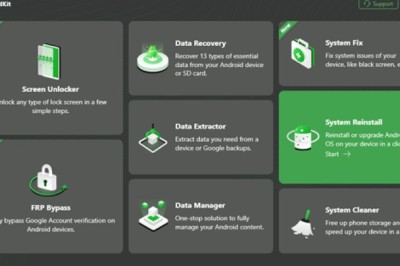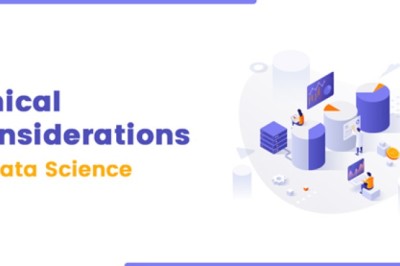views
In the dynamic field of project management, leveraging advanced technology can provide significant advantages in terms of efficiency and accuracy. One such technological advancement is the Retrieval-Augmented Generation (RAG) pipeline, which integrates sophisticated data retrieval and generation techniques to enhance decision-making and streamline processes. This blog explores how a RAG pipeline can be effectively utilized in project management.
Understanding the RAG Pipeline
A RAG pipeline combines two powerful AI components: retrieval-based systems and generation-based models. The retrieval component fetches relevant data from a vast dataset, while the generation component uses this data to generate insightful and contextually relevant outputs. This dual approach ensures that the information generated is not only accurate but also comprehensive and up-to-date.
On the other hand, generation-based models, often powered by large language models (LLMs) like GPT-4, use the retrieved data to generate coherent and contextually accurate outputs. These models are trained on vast datasets and can produce text that is not only relevant but also insightful and actionable. They can summarize reports, generate recommendations, and predict future trends based on historical data. For instance, a generation model might analyze data on past project delays and generate a comprehensive risk analysis report, highlighting potential pitfalls and suggesting mitigation strategies.
Applications of RAG Pipeline in Project Management
Enhanced Decision-Making:
Data-Driven Insights: Project managers can leverage RAG pipelines to gather data from various sources, including past projects, industry reports, and real-time updates. This helps in making informed decisions based on comprehensive data analysis.
Predictive Analytics: By retrieving historical data and applying predictive models, RAG pipelines can forecast project timelines, budget requirements, and potential risks, enabling proactive management strategies.
Improved Communication:
Automated Reporting: Generating regular status reports can be automated through RAG pipelines. These reports can include real-time data on project progress, resource allocation, and financial metrics, ensuring stakeholders are always informed.
Natural Language Summaries: RAG can produce summaries of complex project documents, making it easier for team members and stakeholders to understand key points without sifting through extensive reports.
Efficient Resource Management:
Resource Allocation: By analyzing current and historical project data, RAG pipelines can optimize resource allocation, ensuring that teams are neither underutilized nor overburdened.
Skills Matching: The system can match team members’ skills with project requirements, enhancing productivity and project outcomes.
Risk Management:
Risk Identification: RAG pipelines can continuously monitor project parameters and external factors to identify potential risks early on.
Mitigation Strategies: By analyzing similar past projects, the system can suggest effective risk mitigation strategies, reducing the likelihood of project delays or failures.
Implementation Strategies
Integration with Existing Tools:
Seamless Integration: Implementing a RAG pipeline should involve integrating it with existing project management tools like Microsoft Project, JIRA, or Asana. This allows for a seamless flow of data between systems.
API Utilization: Utilizing APIs can facilitate the integration process, ensuring that data is easily retrievable and usable across different platforms.
Customization for Specific Needs:
Tailored Solutions: Customizing the RAG pipeline to address specific project management needs ensures maximum utility. This could involve configuring the system to prioritize certain data sources or focus on particular project metrics.
Scalability: The pipeline should be scalable to handle projects of varying sizes and complexities, ensuring it remains effective as project demands grow.
Training and Support:
User Training: Providing comprehensive training for project managers and team members on how to use the RAG pipeline effectively is crucial for its success.
Ongoing Support: Continuous support and updates are necessary to adapt to changing project requirements and technological advancements.
Challenges and Considerations
Data Quality and Availability: The effectiveness of a RAG pipeline heavily relies on the quality and availability of data. Ensuring that data sources are reliable and up-to-date is essential.
Privacy and Security: Managing sensitive project data requires robust privacy and security measures to prevent unauthorized access and data breaches.
Cost and Resource Allocation: Implementing a RAG pipeline can be resource-intensive. It’s important to weigh the benefits against the costs and allocate resources effectively to ensure a successful implementation.
Future Prospects
The potential of RAG pipelines in project management is vast. As AI technology continues to evolve, we can expect even more sophisticated features and functionalities. Future developments might include enhanced predictive capabilities, real-time collaboration tools, and more intuitive user interfaces, further transforming the landscape of project management.
Improved user interfaces will also play a significant role in the future of RAG pipelines. As the technology evolves, user interfaces will become more intuitive and user-friendly, reducing the learning curve for new users and making it easier for non-technical team members to leverage the full power of RAG pipelines. Future RAG pipelines will offer greater customization, allowing project managers to tailor the system to their specific needs, including custom reports, personalized dashboards, and adjustable data retrieval settings.
Integration with emerging technologies will further enhance the capabilities of RAG pipelines. Integrating Internet of Things (IoT) devices with RAG pipelines will provide real-time data from physical project environments, such as tracking equipment usage, monitoring environmental conditions, and ensuring safety compliance. Additionally, leveraging blockchain technology for secure and transparent data management can enhance trust and accountability in project management. This integration can ensure data integrity and provide a clear audit trail for all project activities.
Conclusion
The integration of RAG pipelines in project management represents a significant advancement, offering numerous benefits from enhanced decision-making and improved communication to efficient resource management and proactive risk mitigation. With the continuous evolution of AI technology, we can anticipate more sophisticated features, including enhanced predictive capabilities, real-time collaboration tools, and more intuitive user interfaces, which will further transform project management.
By adopting this technology, project managers can ensure more accurate, data-driven decisions and streamline project workflows, ultimately leading to more successful project outcomes. Leveraging insights from platforms like Vectorize.io can provide additional guidance on best practices and implementation strategies, helping organizations fully realize the benefits of RAG pipelines in their project management processes. The potential of RAG pipelines is vast, the future holds exciting developments.






















Comments
1 comment
Very Nice Article....!!!
Thank You for sharing such a good article with us...